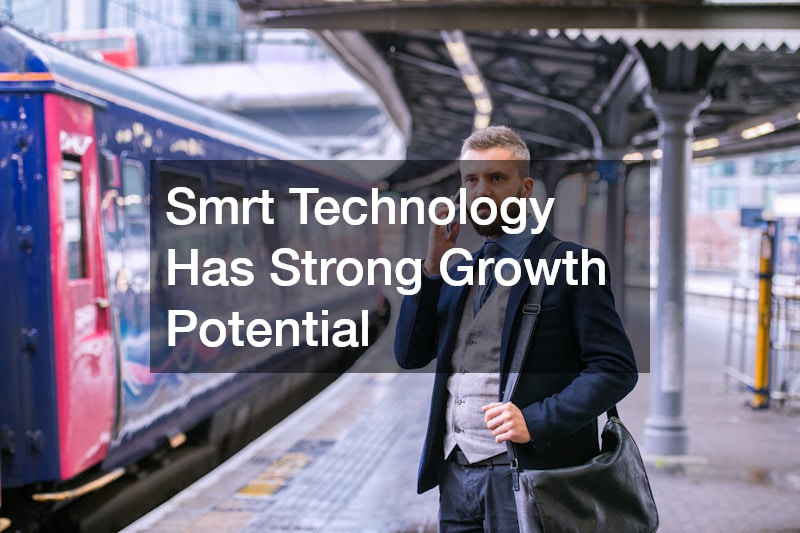Urban transportation faces numerous challenges, such as traffic congestion, pollution, and insufficient infrastructure. SMRT (Smart Mass Rapid Transit) plays a crucial role in addressing these issues by offering innovative solutions for today’s urban mobility needs.
What is SMRT and how does it work?
Overview of SMRT Technologies
SMRT incorporates advanced technologies such as autonomous vehicles, IoT devices, and machine learning to enhance urban transit. These technologies ensure that the system operates efficiently, safely, and reliably in dynamic urban environments.
Moreover, SMRT integrates real-time data analytics to optimize route management and energy consumption. This combination allows for adaptive responses to varying urban traffic patterns, improving the overall efficiency of urban transit networks.
By leveraging cutting-edge technologies, SMRT provides a seamless and interconnected transport experience for city dwellers. The use of such sophisticated systems marks a departure from conventional, static urban transport solutions.
Key Features and Innovations
SMRT systems are distinguished by their focus on connectivity, automation, and data-driven insights. Features like predictive maintenance alerts and automated passenger information systems set SMRT apart.
In addition to these, innovations like contactless payment and multimodal transport options enhance user convenience. These features make public transport more attractive and user-friendly, encouraging more people to adopt it.
Key innovations such as energy-efficient trains and sustainable infrastructure make SMRT an environmentally friendly option. Such attributes help reduce the carbon footprint of urban transportation significantly.
How is SMRT improving urban mobility?
Reducing Traffic Congestion
SMRT systems play a pivotal role in reducing traffic congestion by offering efficient mass transit options. With high-frequency schedules and optimized routes, they serve as an attractive alternative to private car usage.
Deployed strategically, SMRT systems alleviate pressure on road networks by shifting the dependency from personal vehicles to public transit. This shift is essential in high-density urban areas where traditional road expansion is not feasible.
Furthermore, SMRT leverages technology to synchronize traffic signals and control measures, improving the flow of all modes of transport. This systemic approach ensures a smoother commute for everyone in the city.
Enhancing Accessibility and Convenience
Accessibility is a cornerstone of SMRT systems, as they are designed to cater to a diverse range of users, including those with disabilities. Features like step-free access and tactile paving make stations more inclusive.
Convenience is another priority, highlighted by real-time updates and smartphone applications that provide journey planning services. These tools empower commuters with timely information to make informed travel decisions.
The seamless integration of different transit modes through a single system creates a hassle-free commuting experience. Such integration promotes a culture of using public transport as the primary mode of urban travel.
What are the environmental benefits of SMRT?
Decreasing Carbon Footprint
One of the most significant environmental benefits of SMRT is its potential to drastically reduce the carbon footprint of urban areas. Energy-efficient technologies, such as regenerative braking and solar-powered stations, contribute to this goal.
By providing an efficient alternative to private vehicles, SMRT reduces the reliance on fossil fuels, leading to lower greenhouse gas emissions. Encouraging the use of public transport over personal cars arises as a crucial environmental strategy.
This shift helps cities meet their climate action goals and reduce air pollution levels, improving urban living conditions. The result is a more sustainable urban environment that benefits future generations.
Promoting Sustainable Urbanization
SMRT systems support sustainable urbanization by encouraging high-density, transit-oriented development. This approach reduces urban sprawl and allows for better land-use planning.
The development of residential and commercial spaces around SMRT hubs fosters vibrant, walkable communities. With easy access to efficient transit systems, these areas become more self-sufficient and less reliant on car travel.
Moreover, SMRT’s focus on sustainability extends to their infrastructure design and operations, emphasizing eco-friendly construction methods and materials. Together, these measures contribute to a holistic approach to sustainable urban growth.
What are the challenges and future prospects for SMRT?
Current Challenges Facing SMRT Implementation
Despite its many advantages, the implementation of SMRT faces significant challenges, including high initial costs and technical complexities. Building the necessary infrastructure demands substantial investment from both public and private sectors.
Another challenge is the integration of new technologies into existing systems, which can be complicated. Ensuring cybersecurity and data privacy also remains a critical concern as more data becomes integral to SMRT operations.
Addressing these challenges requires collaboration between governments, technology companies, and urban planners. Only through concerted efforts can these hurdles be transcended to pave the way for successful SMRT adoption.
Future Developments and Opportunities
The future of SMRT is promising, with numerous opportunities for growth and innovation on the horizon. Emerging technologies like AI and blockchain have the potential to further enhance SMRT efficiency and reliability.
There is also room for expansion in terms of geographical reach, as more cities worldwide recognize the benefits of implementing SMRT systems. Growth in SMRT usage will also foster more research into sustainable transit practices.
As these developments unfold, SMRT stands poised to revolutionize urban transportation, transforming how people live and move in cities. The continued evolution of SMRT holds the promise of a brighter, more sustainable future for urban mobility.
Throughout this article, we have explored the pivotal role SMRT plays in shaping the future of urban transportation. From improving mobility and convenience to offering environmental benefits, SMRT systems present a multifaceted solution to modern transit challenges.
Despite facing implementation obstacles, the potential for future growth and innovation in SMRT technology remains vast. As cities continue to evolve, SMRT will be at the forefront of creating more sustainable, efficient, and livable urban environments.

